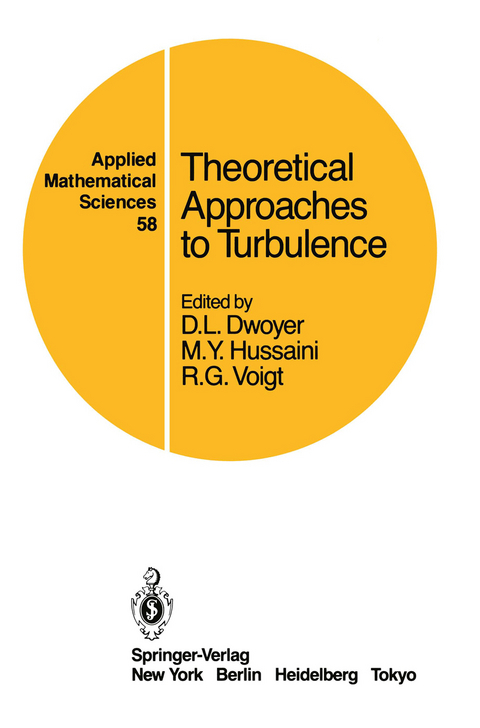
Theoretical Approaches to Turbulence
Springer-Verlag New York Inc.
978-0-387-96191-0 (ISBN)
With the care and cooperation of the participants, the workshop achieved its purpose, and we believe that its proceedings published in this vol/. llre has lasting scientific value. The tone of the workshop was set by two introductory talks by Bushnell and ChaImm. Buslmell presented the engineering viewpoint while Chapman reviewed from a historical perspective developments in the study of turbulence. The remaining talks dealt with specific aspects of the theoretical approaches to fluid turbulence.
I. Turbulence Sensitivity and Control in Wall Flows.- II. Observations, Theoretical Ideas, and Modeling of Turbulent Flows -- Past, Present, and Future.- III. Large Eddy Simulation: Its Role in Turbulence Research.- IV. An Introduction and Overview of Various Theoretical Approaches to Turbulence.- V. Decimated Amplitude Equations in Turbulence Dynamics.- VI. Flat-Eddy Model for Coherent Structures in Boundary Layer Turbulence.- VII. Progress and Prospects in Phenomenological Turbulence Models.- VIII. Renormalisation Group Methods Applied to the Numerical Simulation of Fluid Turbulence.- IX. Statistical Methods in Turbulence.- X. The Structure of Homogeneous Turbulence.- XI. Vortex Dynamics.- XII. Two-Fluid Models of Turbulence.- XIII. Chaos and Coherent Structures in Fluid Flaws.- XIV. Connection Between Two Classical Approaches to Turbulence: The Conventional Theory and the Attractors.- XV. Remarks on Prototypes of Turbulence, Structures in Turbulence and the Role of Chaos.- XVI. Subgrid Scale Modeling and Statistical Theories in Three-Dimensional Turbulence.- XVII. Strange Attractors, Coherent Structures and Statistical Approaches.- XVIII. A Note on the Structure of Turbulent Shear Flows.- XIX. Lagrangian Modelling for Turbulent Flows.
| Reihe/Serie | Applied Mathematical Sciences ; 58 |
|---|---|
| Zusatzinfo | 392 p. |
| Verlagsort | New York, NY |
| Sprache | englisch |
| Maße | 155 x 235 mm |
| Themenwelt | Mathematik / Informatik ► Mathematik |
| Naturwissenschaften ► Physik / Astronomie ► Allgemeines / Lexika | |
| Naturwissenschaften ► Physik / Astronomie ► Theoretische Physik | |
| Technik ► Maschinenbau | |
| ISBN-10 | 0-387-96191-7 / 0387961917 |
| ISBN-13 | 978-0-387-96191-0 / 9780387961910 |
| Zustand | Neuware |
| Haben Sie eine Frage zum Produkt? |
aus dem Bereich


